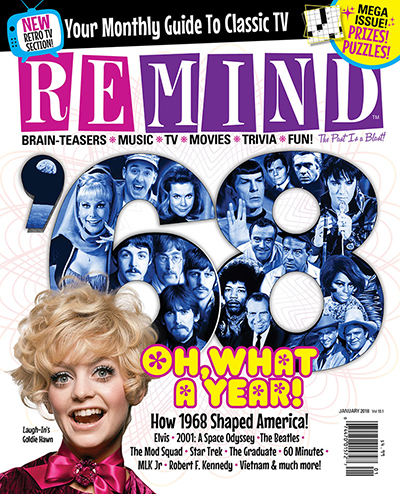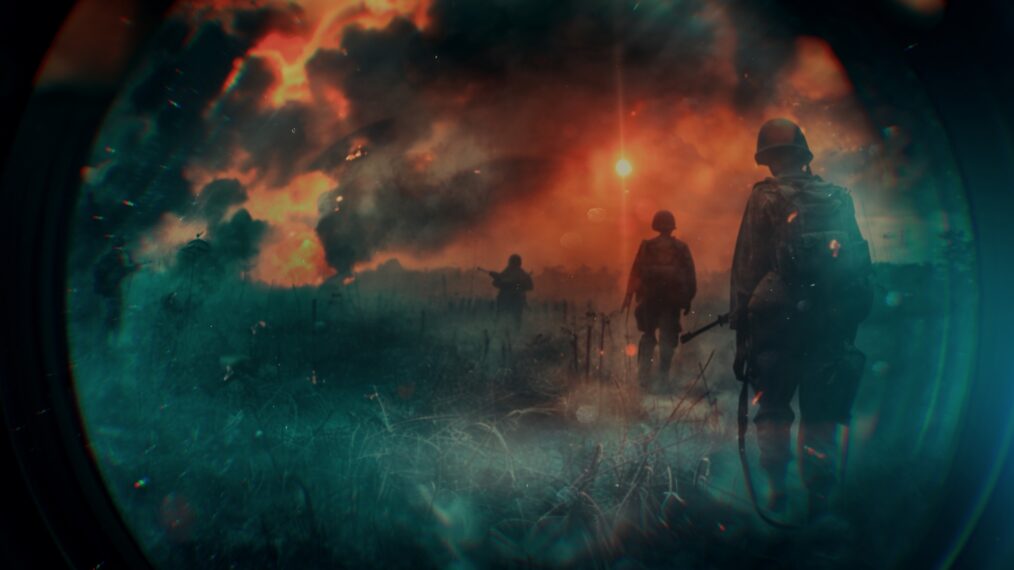Unforgettable Stories of Heartbreak and Heroism in ‘Vietnam: The War That Changed America’

As 50 years since the fall of Saigon and the end of the Vietnam War approaches, the new six-part documentary series Vietnam: The War That Changed America presents stories of heartbreak and heroism from the people who were directly involved in the divisive conflict.
With rarely seen archival footage and photographs, the series goes deeper than the geopolitics and social unrest of the period to gain perspective from those who shaped this difficult period in history.
Former comrades, some who haven’t seen each other since their tours in Southeast Asia ended, reunite to share their thoughts and memories. Vietnamese civilians recall the horrors of war and the events that changed their lives forever. And former Viet Cong reveal the tenacity and determination it took to fight against a global superpower for a cause to which they were fully committed.
Ethan Hawke narrates the series, which has all six episodes streaming on Apple TV+ beginning Friday, January 31.
Episode 1: Boots on the Ground
The U.S. finds itself in a military conflict the likes of which it has never seen against an enemy unlike any it has faced before. Tony Nadal, who was with the U.S. Air Cavalry, recalls the fierce fighting at the Battle of Ia Drang in November 1968, the first large-scale combat Americans faced in Vietnam. Two tunnel rats — soldiers who went into the vast network of underground bunkers built by the Viet Cong — develop a lifelong bond during the war.
Episode 2: Uprising
The Tet Offensive of early 1968 shocks U.S. and South Vietnamese forces with widespread Viet Cong and North Vietnamese Army guerilla attacks in cities throughout the country. Military policeman Paul Healy is among the servicemen who repel a Viet Cong attack on the U.S. embassy in Saigon. Bay Hon and Vu Minh Nghia, part of the Viet Cong forces who infiltrated Saigon, recall the battle and their capture after it. John Bagwell, an American Forces Radio disc jockey, is wounded but escapes enemy forces who have overrun the city of Hue. U.S. Marine Alex Wells was among the troops pinned down during Hue siege, as bad weather prevented air support. Journalist Thea Rosenbaum got eyewitness accounts as the battle for the Citadel, a 19th century fortress in Hue, became a drawn-out firefight that lasted for weeks.
Episode 3: Not My War
The Tet Offensive has a deep psychological impact on U.S. troop morale and support for the war at home. U.S. Marine Malik Edwards, disillusioned by American actions during the war, joins the Black Panthers after returning home. U.S. Air Force fighter pilot John Stiles was shot down and later rescued by Bob Noble and a helicopter crew, and they reunite to share memories. Huan Nguyen, whose entire family was killed in the Tet Offensive, fled to the U.S. in 1975. Nguyen would go on to become a rear admiral in the U.S. Navy, an engineer and a successful business leader. U.S. Army Capt. Melvin Pender sees combat on a swift boat in the Mekong River delta, and is called to compete in track at the 1968 Olympics.
Episode 4: Mutiny
Antiwar sentiment grows in the American public, and morale and discipline deteriorate among American troops. Joan Furey of the U.S. Army Nurse Corps loses faith in the cause she volunteered for and becomes an outspoken critic of the war.
William Broyles Jr., who would go on to create the TV series China Beach and would get an Oscar nomination for writing Apollo 13, was a green Marine officer when he took command of a platoon in Vietnam in 1969. When Broyles arrived, the platoon had been without a commander for some time, and there was no interest in getting a new one.

© 2025 Apple Inc. All rights reserved.
“When I showed up, the guys in my platoon, they knew the war was over, that we were not of the generation of the early war that thought that we were fighting for freedom, were fighting to stop communist aggression,” Broyles (pictured above) tells us. “We just knew we were there for a war that was over, and they didn’t want to die for Richard Nixon. They didn’t want to die for Henry Kissinger. They didn’t want to die for me.”
He quickly learned that doing things by the book could get him killed, and not necessarily by enemy forces. Instances of “fragging” increased as morale dropped and soldiers were less likely to fight and die for a cause they believed was lost. “In 1969 and ’70, the Armed Forces Journal documented over 400 cases of officers being killed by their own men,” Broyles tells us. “Were you too ambitious or incompetent or whatever? And that’s very much in everybody’s mind. And so you had to think, ‘What do you do in a war where you’re there to kill and die, and you don’t know why, and you see suffering and sacrifice and loss and terrible things, and what do you do about it?’ And I was just with these men, me, I was the only officer.”
A Marine under his command, Jeff Hiers, eventually explained to Broyles that it was in his best interest to back off. And Broyles did. More than 50 years later, Hiers and Broyles reunite and meet up for a beer.
“The beautiful thing about this documentary is it charts the change in feelings of the people who were fighting there,” Broyles says. “And I guess my episode is the hinge one where you see the transformation from the idealism to the disillusionment. We had guys in my platoon who were willing to sacrifice themselves for each other. They’d give up their last drop of water, they would give their lives for each other. And they didn’t have leaders who were worthy of their own sacrifice. And I’m afraid that that’s been too often true.”
Episode 5: Homecoming
Jim Fife and Scott Camil, best friends in the Marine Corps, were later divided by their work and their sentiments after returning home. Camil became an activist in Veterans Against the Vietnam War. Fife, feeling a sense of duty to the comrades still fighting, became a helicopter pilot and returned to Vietnam for another tour.
Episode 6: The Endgame
As the U.S. withdraws from South Vietnam, the situation becomes desperate for civilians. Jan Wollett, a flight attendant for World Airways, helped evacuate women and children from Da Nang under harrowing circumstances. U.S. Navy pilot Porter Halyburton was shot down and presumed dead in 1965, until word got back to his wife that he was alive and a prisoner of war in the Hanoi Hilton. South Vietnamese pilot Maj. Buang-Ly risked everything to get his family out of the country by stealing a small single-engine Cessna, flying it out to sea and landing it on the U.S.S. Midway. With the plane’s fuel running out, Midway skipper Lawrence Chambers ordered his crew to clear the deck of helicopters — pushing them into the sea — so Buang and his family could land safely.

1968 Retrospective
January 2018
This special expanded issue celebrates all things pop culture in 1968.
Buy This Issue
